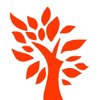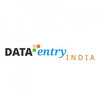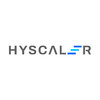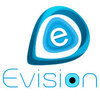Filter interviews by
Naptune Powertech Energy Services Senior Piping Supervisor Interview Questions, Process, and Tips for Experienced
Naptune Powertech Energy Services Senior Piping Supervisor Interview Experiences for Experienced
1 interview found
I applied via Approached by Company and was interviewed in Jul 2023. There were 2 interview rounds.

(10 Questions)
- Q1. What are functions of valves?
- Ans.
Valves are mechanical devices used to control the flow of fluids within a piping system.
Regulating flow of fluids
Stopping and starting flow
Preventing backflow
Pressure control
Temperature control
- Q2. What are isolation valves?
- Ans.
Isolation valves are types of valves used to completely stop the flow of fluid in a piping system.
Isolation valves are typically used to isolate a section of piping for maintenance or repair purposes.
They are designed to completely stop the flow of fluid when closed.
Common types of isolation valves include ball valves, gate valves, and butterfly valves.
Isolation valves are essential for ensuring the safety and efficien
- Q3. What are regulations valves?
- Ans.
Regulations valves are valves that are designed and manufactured to meet specific industry standards and regulations.
Regulations valves are used in various industries such as oil and gas, petrochemical, and pharmaceutical.
These valves are built to comply with specific codes and standards set by organizations like ASME, API, and ISO.
They are essential for ensuring safety, efficiency, and compliance with regulatory requi...
- Q4. What are special valves ?
- Ans.
Special valves are valves designed for specific applications or functions in piping systems.
Special valves are designed to meet specific requirements in piping systems
They may have unique features such as pressure relief, flow control, or isolation capabilities
Examples include pressure relief valves, control valves, and isolation valves
- Q5. What are types of compressor drives?
- Ans.
Types of compressor drives include electric motor, gas turbine, steam turbine, and diesel engine.
Electric motor
Gas turbine
Steam turbine
Diesel engine
- Q6. What are type of towers?
- Ans.
Towers in piping systems are structures used to support equipment, such as vessels, exchangers, and columns.
Distillation towers
Cooling towers
Flare towers
Fractionation towers
Reboiler towers
- Q7. How to located feed nozzle?
- Ans.
Feed nozzles can be located by referring to the piping and instrumentation diagram (P&ID) and conducting a physical inspection of the equipment.
Refer to the piping and instrumentation diagram (P&ID) to identify the location of the feed nozzle
Conduct a physical inspection of the equipment to visually locate the feed nozzle
Use equipment tags or labels to help identify the feed nozzle location
Consult with other team membe...
- Q8. What are wetted parts of valves?
- Ans.
Wetted parts of valves are the components that come in contact with the fluid being controlled by the valve.
Wetted parts include the valve body, seat, disc, stem, and any internal components that are in direct contact with the fluid.
These parts are typically made of materials that are compatible with the fluid to prevent corrosion or contamination.
Examples of wetted parts materials include stainless steel, brass, bronz...
- Q9. What are two types of ball valve?what are isometrics drawings?
- Ans.
Two types of ball valves are floating ball valve and trunnion ball valve. Isometrics drawings are 3D representations of piping systems.
Floating ball valve has a floating ball design that seals against the seat under pressure.
Trunnion ball valve has a fixed ball design that is supported by trunnion bearings.
Isometrics drawings are detailed 3D representations of piping systems showing the layout, dimensions, and connecti...
- Q10. How to located feed nozzle ?
- Ans.
Feed nozzles can be located by referring to piping and instrumentation diagrams (P&IDs) and equipment layout drawings.
Refer to P&IDs to identify the location of feed lines and nozzles
Consult equipment layout drawings to pinpoint the exact location of feed nozzles on equipment
Use isometric drawings to visualize the piping layout and locate feed nozzles accurately
Interview Preparation Tips
Top trending discussions






Naptune Powertech Energy Services Interview FAQs
Tell us how to improve this page.
Interview Questions for Popular Designations
- Piping Engineer Interview Questions
- Piping Designer Interview Questions
- Piping Supervisor Interview Questions
- Piping Design Engineer Interview Questions
- Piping Foreman Interview Questions
- Senior Piping Engineer Interview Questions
- Mechanical Piping Engineer Interview Questions
- Piping Stress Engineer Interview Questions
- Show more
Interview Questions from Similar Companies
|
Quality Engineer
4
salaries
| ₹3.6 L/yr - ₹6 L/yr |
|
Piping Engineer
4
salaries
| ₹2.5 L/yr - ₹7.1 L/yr |
|
Safety Supervisor
4
salaries
| ₹3 L/yr - ₹3.6 L/yr |
|
Mechanical Engineer
3
salaries
| ₹4 L/yr - ₹7.2 L/yr |
|
Assistant Manager Mechanical
3
salaries
| ₹6 L/yr - ₹7.5 L/yr |

Marpu Foundation

Huawei Technologies

HCL Infosystems
Exotic Learning
Calculate your in-hand salary
- Home >
- Interviews >
- Naptune Powertech Energy Services Interview Questions >
- Naptune Powertech Energy Services Senior Piping Supervisor Interview Questions for Experienced







